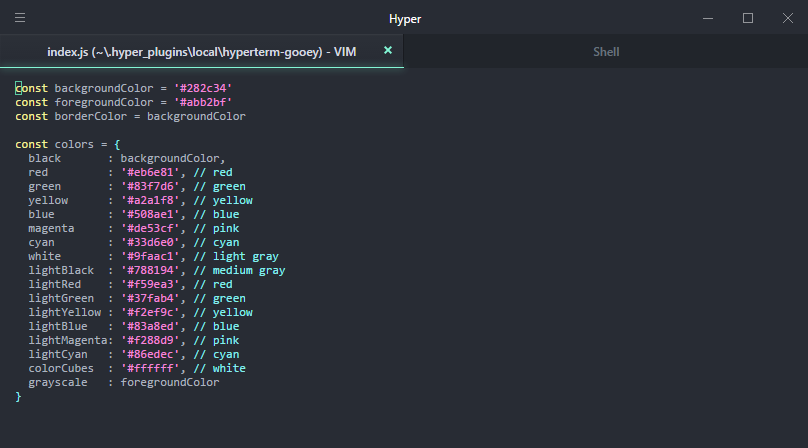I was able to add Windows XP Hyperterm to Windows 8 by creating a folder in Program Files (X86) and copying the appropriate Hyperterm entries to it (from another post). It executes and works great. When I save my session, it creates a.ht file in the Hyperterm folder down in my User Files tree. HyperTerminal Private Edition is a terminal emulation program that supports communications over TCP/IP networks, Dial-Up Modems, and serial COM ports. U nfortunately, Hyperterminal is not included with Windows 7 but you can still control your serial devices with alternate methods. There are several alternatives to this which I am going to discuss in this guide. These cookies are necessary for the website to function and cannot be switched off in our systems. They are usually only set in response to actions made by you which amount to a request for services, such as setting your privacy preferences, logging in or filling in forms. HyperTerminal is the Windows XP feature which is not available in the latest Windows 7, 8 or 10. Use the alternative HyperTerminal software in your PC.
As you know, technologies are quickly developing, especially information technologies. If before, the knowledge of the AT commands of a particular modem was an integral part of the required knowledge of any respected network administrator, then with the advent of cable modems and solving the last mile problem, this issue has gone forever. Modems have gone and their AT commands and the software that made it possible to work with them.
And here is a vivid example of this trend – in older versions of Windows, there was a useful utility called HyperTerminal. HyperTerminal is a cool little tool that allows you to connect (using a modem or Ethernet) to other computers, Telnet sites, BBS, hosts, etc.
You will no longer find HyperTerminal not only on Windows 10 but also on Windows XP and Windows 7. Probably one of the reasons for removing HyperTerminal from Windows was the fact that COM ports on modern computers are practically absent.

So, If you recently upgraded to Windows 10 and wonder what happened to the old HyperTerminal, you are not alone. Judging by the queries in the search engines, this topic is still relevant.
If you like HyperTerminal and used to it and still need it to control serial devices, there is a way to get it back. Besides, several new HyperTerminal alternatives are often better suited for secure shell access and modem troubleshooting.
Windows remote shell
First of all, if you just need remote shell access, you may utilize the Windows Remote Shell command-line option in all recent versions of Windows – 7, 8, and 10.
It is actually an SSH replacement that provides remote access to the command line via an encrypted connection. It also can use the SOAP protocol. You can check out the Microsoft site about Winrs, which provides some instructions and examples.
Phone and modem
If you need HyperTerminal to manage and troubleshoot modems, Windows now offers this functionality in the Phone and Modem settings section. Just open the Control Panel, go to Hardware and Sounds, and click on Phone and Modem. Sometimes you cannot find it there. In this situation, click on the View Items menu and select Large Icons or Small Icons.


Now once Phone and Modem window is open, you have to provide information about the region, country, area code, operator, and external dialing to further access the dialog box and troubleshoot the modem.
HyperTerminal alternatives
In case you do not wish to use the above methods, you can use numerous alternative tools that work similarly to HyperTerminal. Here are some of them:
HyperTerminal Private Edition is a terminal emulation program that is used to communicate with COM ports, TCP/IP networks, and remote access modems. It is a commercial product. Today, HyperTerminal Private Edition is the best option in case you need the best HyperTerminal program for Windows 10.
TeraTerm is an open-source terminal emulator and SSH module that supports SSH1, IPv6, SSH2, Telnet, and file transfer protocols like Kermit, XMODEM, B-PLUS, ZMODEM, B-PLUS, and others.
Putty is one more free tool for Telnet and SSH for Windows. It also works as an xterm terminal emulator.
Original HyperTerminal
Those who cannot live without the original HyperTerminal can extract several files from the old Windows installation bundle and copy them to Windows 10. Actually, you need just two files: hypertrm.exe and hypertrm.dll. Copy these files to the directory of your choice on your computer and it should work just fine.

Hyperterminal Ubuntu
Conclusion
Hyperterminal Software Download
In spite of the fact, Microsoft does not offer HyperTerminal for Windows 10; it is easy to find alternatives. For example, you can use tools like Putty. If you still want it, just because you have been using it for years, you can either copy files from XP or get the Private Edition.

- Bates, Marcia (1979): Idea Tactics. IEEE Transaction on professional Communication (PC-23) 7, June 1980, 95–100.Google Scholar
- Bush, Vannevar (1945): As we may think. Atlantic Monthly, 176, No. 1, July 1945, 101–108.Google Scholar
- Conklin, Jeff (1987): Hypertext: An introduction and survey. IEEE Computer September 1987, 17–41.CrossRefGoogle Scholar
- Halasz, Frank G. (1988): Reflections on NoteCards: Seven issues for the next generation of hypermedia systems. Communications of the ACM 31 No. 7 July 1988 836–852.CrossRefGoogle Scholar
- Marchionini, Gary; Shneiderman, Ben (1988): Finding Facts vs. Browsing Knowledge in Hypertext Systems. IEEE Computer January 1988, 101–108.Google Scholar
- Mayer, Renate (1989): Benutzerschnittstelle für eine Terminologiedatenbank. In: Endres-Niggemeier, B. et.al. (Hrsg.): Interaktion und Kommunikation mit dem Computer. Proc. GLDV-Jahrestagung. Informatik Fachberichte 238 Springer-Verlag, Heidelberg.Google Scholar
- Nelson, Ted (1966): Getting it out of our system. In: Schecter, G. (ed.): Information Retrieval A critical view. Academic Press, London, 191–210.Google Scholar
- Raymond, Darrell R.; Tompa, Frank WM. (1988): Hypertext and the Oxford English Dictionary. Communications of the ACM (31) 7 871–879.CrossRefGoogle Scholar
- Shneiderman, Ben; Morariu, J. (1986): The Interactive Encyclopedia Systems (TIES), University of Maryland, Department of Computer Science.Google Scholar
- Williams, Gregg (1987): HyperCard. BYTE 12 1987, 109–117.Google Scholar
- Yankelovich, Nicole; Haan, Bernard J.; Meyrowitz, Norman K.; Drucker, Steven M. (1988): Intermedia: The Concept and the Construction of a Seamless Information Environment. IEEE Computer, 1, 81–96.CrossRefGoogle Scholar
